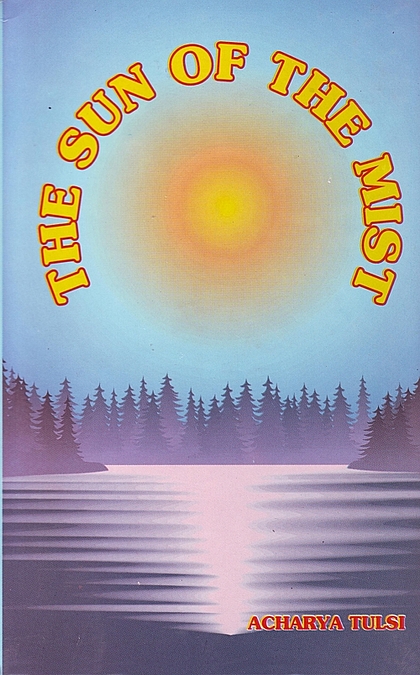Nearly two decades have since passed. We were on a pilgrimage of South India. The chaturmas of the year 1968 was held in Madras. After it was over, we were required to observe Maryada Mahotsava at Chidambaram. We left Madras, reached Tiruvannamalai. One more knot in the thread of time-the year 1968 ended and 1969 began. On the 1st January 1969, a weekly bulletin was inaugurated. The objective was to establish a dialogue between the North and the South-in other words, to associate the entire community with the Acharya. The camp office of the Adarsh Sahitya Sangh was with us. The responsibility for bringing out the bulletin fell upon it. The series that started during the Southern tour has been continuing to date without interruption. During the past 20 years, 929 numbers of the bulletin have reached its readers. Apart from the Terapanth community, other people, too, have shown interest in it. Primarily, it contains an appraisal of the activities and programmes of the Acharya. Other news is limited. Limited means, limited publication and distribution. Still the bulletin gained popularity.
Two years ago, a suggestion was made that through the medium of the bulletin, an appraisal of the contemporary situation be presented. It seemed to be a good idea. Rather than merely acquainting the readers with the programmes and activities of the Acharya, it seemed even more important to provide them with new horizons for thinking. Only when presented with a particular analysis, can the reader contribute to it his own thought, and find a new light. Keeping this in view, it was decided that a regular column be added to the bulletin. How long this column should continue was not thought of at the time. My idea was that it would continue for four to six months. However, the column which began under the title of 'Disha-Darshan' (The Pointer'), became extremely popular with the readers.
The skill of the publisher of a newsletter or bulletin becomes manifest in the growth of the readers' interest. It is the readers who provide an incentive for writing. I am informed that the readers specially read 'Disha Darshan' and like it. Their interest greatly contributed to the flow of my thought and I continued to offer my views on topical issues.
The question may arise as to whether religious teachers should concern themselves with topical themes at all. Their mission is to reveal the eternal. They should discuss religion; explicate virtue and sin; expound the nature of salvation and show the path thereto. They are not required to offer a critique of the TV, the Festival of Russia, the Joint Family, the SAARC Conference, etc. In this context, the sighting of five principles of religious revolution would be quite pertinent. I expounded these principles some years ago. Many people were then shocked by the word 'Revolution'. That a religious teacher should talk of a revolution in religion was not easily intelligible. But with the passage of time and changed circumstances, it has now become acceptable. It is my belief that while giving oneself totally to the eternal, one cannot quite ignore the topical. Also the present cannot be quite separated from the eternal. Because the present is the real. Two of the five principles of religious revolution are the capacity to resolve problems and the supremacy of the present. How can a religion which cannot guide a man to resolve his problems, offer him salvation? Similarly, how long can the merely sweet-sounding promises of a heaven after death keep the glory of a religion intact? Any man interested in the reformation of the present and the resolution of current problems cannot afford to neglect the contemporary scene. That is why the bulletin treats of religious, spiritual, social, cultural, political and other contemporary issues.
I think that religion and the religious teacher have their limits. But while keeping within those limits, they can certainly offer solutions to the problems of the world. If they do not provide proper guidance, sense of direction and inspiration for constant endeavour, how are they going to bring about an awakening in the community? Who shall bear the responsibility for awakening the public? If, even the establishment of democratic values cannot end the indifference of the government and the helplessness of the public, how can we hope for it under a dictatorship?
The Terapanth Dharam Sangh has an independent approach towards certain vital issues. While reposing full faith in tradition, it is not averse to new developments. Indeed, the art of fixing the eternal in the framework of modernity testifies to the uniqueness of our Sangh. The mastery of this art is necessary to establish harmony between spirituality and everyday behaviour. The series of 'Disha-Darshan' articles is an effort in that direction.
Till 22 Jan, 1989, this column has yielded 101 articles. Some people wanted this collection to be published in a book form. From the very beginning, Sadhvi Pramukha Kanak-Prabha had kept them securely and in order. Kalash Chaturvidh displayed great readiness and the material was sent to the press for publication under the title of 'Ukase Mein Utah Suriji'. Thus, a critique of the times has found a durable form. I hope this collection would prove useful to the community. May it enable the readers to change their thinking and conduct, and not to be hypnotised by the glamour of new cultures. Let them preserve their own culture-the culture of discipline and renunciation-from being consigned to oblivion.
- Acharya Tulsi
Benthic Bhavan Bidasar (Rajasthan) 18 January 1989
 Acharya Tulsi
Acharya Tulsi
